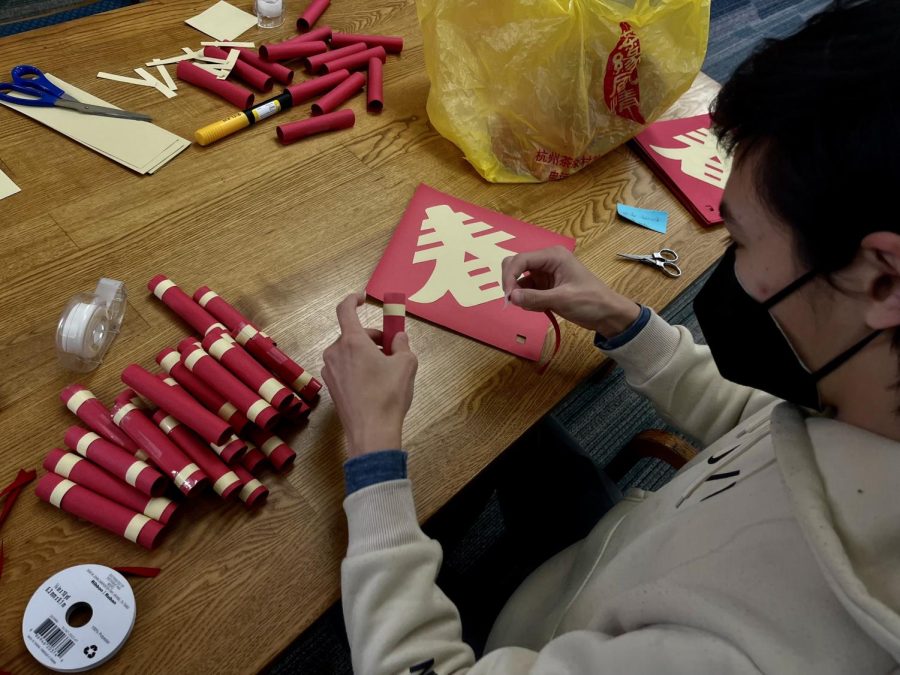Lunar New Year at Sequoia
Sequoia ASU made paper decorations to hang on doors for Lunar New Year.
January 23, 2023
While many Sequoia students have entirely left New Year’s celebrations behind, some have been busy celebrating Lunar New Year, sometimes known as Chinese New Year. With an Asian population of just six percent, and only a fraction of those students celebrating the holiday, Lunar New Year can pass unnoticed at Sequoia. This year, the Year of the Rabbit, the holiday fell on January 22. The exact date of the New Year tends to change each year because it is based on the moon’s cycles rather than the Earth’s rotation around the sun.
In parts of Asia, Lunar New Year is the year’s major holiday, celebrated with parades, dragons, fireworks, food and more. Some traditions have been brought to Sequoia by students and their families. Here at Sequoia, the Asian Student Union (ASU) celebrated the new year by making paper decorations to hang on doors. Hillsdale mall, in San Mateo, is celebrating the holiday this weekend with dancing and performances. On February fourth, Redwood City will celebrate Chinese New Year at the square with drummers, martial arts, and more. Almost all Sequoia students who celebrate the holiday receive hong bao, red envelopes containing small amounts of cash, usually from older generations to younger ones.
“I am a fourth or fifth-generation Chinese, so the only tradition we have is giving red envelopes. Now that I’m married, I give red envelopes. I don’t know if it’s just Cantonese, but we give one envelope per parent,” French teacher Madame Chin said. “I try to be careful about not giving the wrong amount, so no fours.”
In Chinese culture, the number four is unlucky because the word for four sounds like the word for death.
Food is also a large part of celebrations. “We usually go over to my grandparents’ house and a bunch of other family members come over and we have this big dinner with all this fancy expensive seafood. Usually, there’s lobster,” junior Owen Leung said. Other traditional foods include long noodles, representing a long life, and fish, whose Chinese pronunciation is a homonym for abundance.
Like any holiday, there are stories and myths that accompany it. “I’m a rat,” freshman Alex Lee said. According to lore, the 12 animals in the Chinese zodiac, which cycle through every 12 years rather than annually, were selected through a race. In order to win, the animals had to cross a river to the finish line on the shore. The Rabbit, this year’s animal, was proud of his quick speed and looked down upon the slow Ox. Arriving early to the race and confident in his victory, the Rabbit took a nap on the shore. When he awoke, three animals had already finished before him- the Rat, who had hitched a ride on the Ox, the Ox himself and the Tiger. Thus, the Rabbit represents the fourth year in the 12-year cycle of the Chinese zodiac.







